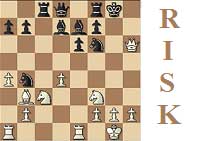Since I get this asked a lot, I thought I’ll write a post on this topic. Note: I will assume that long term is 3+ years with some of the investments being purchased for a much longer period (read indefinitely). The problem with equity investing is that the line between trading and investing is blurred by the want for money. Even those who genuinely want to make long term investment decisions, get jittery when their stock prices correct by a few percentage points.
Consider this – If you were not buying stocks and were investing your money in any other asset class like property, would you be buying or selling that house every 2 weeks? I guess the fact that shares are liquid investments makes people do that. So as the very first rule – respect your long term investment decisions.
What’s your risk profile?

These tests will grade you on a scale and try to convince you to invest certain amounts based on your score. I think its fun to take these tests if you are really bored at office or if you are a fan of multiple choice questions. You may agree or disagree with everything else I say, please never base your investment decisions on the basis of any such test.
Remember 2 things – (i) you know the amount of risk you should take and (ii) in life there are no guarantees.
That said, the 100 minus your age rule is a good one actually (minus your age out of 100 – invest that much percentage of your savings in equities). So for example, I am 34, I should invest 66% of my savings in equities). In fact there is evidence to suggest that it works well with market cycles provided you start young. Just keep moving some of your equity holdings into fixed incomes or debt products as you get older (I know – no one wants to admit getting older, just do it once every 3 years).
As for equity investments, forget the questionnaires and invest with confidence. On the 100 minus your age rule, I did write in detail about that in the post here – Long term investment stocks. You should definitely read the post if you are making long term investment decisions in stocks.
Last word
One thing that I did not mention in either of the posts is that, once you have invested in all the safe income options like fixed income products, insurance, gold, property and the blue chip stocks, whatever you are left with for investing in the small cal/ lesser known companies, be fearless with those decisions. Take some risk but don’t gamble. To explain with an example – “It is risky (may be an extremely risky investment – but viable) to invest in a company that may be trying to clone humans and sell them as slaves, but investing in a company working on a plan to immortalize humans is just downright stupid (I would think)”.


Superb info sir